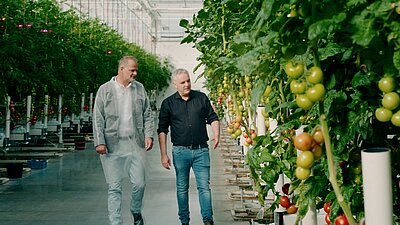Doing international business together!

Brainport for SMEs supports both Brainport entrepreneurs who want to operate internationally and foreign entrepreneurs who want to do business here. By sharing our knowledge and deploying our network, we help both sides.
There are many initiatives in the Brainport region that offer knowledge and experience in international business. Think of cooperation clusters, embassies, cluster organisations, consulates and fellow entrepreneurs who can help you further. Brainport for SMEs is your gateway to all these initiatives.
One phone number for all your SME questions
Call 06 86 80 50 30 and we will help you. Do you prefer to contact us by email? That's also possible at: info@brainportvoormkb.nl.
This is what we can do for you:
- Give advice during a personal meeting
- Refer you to a relevant organisation, company or partner
- Provide the right contacts
- Inform you about funding opportunities
- Organise workshops for you to attend
Going on a trade mission?
Brainport belongs to the ‘Big 5’ of regional development companies (ROMs) in Europe. This offers advantages: we join major trade and innovation missions and connect participating start-ups and scale-ups via matchmaking to initiatives, entrepreneurs and partners who can help them further.
Some examples of well-known missions we organise or attend with a delegation of companies:
The Smart City Conference in Barcelona
The Tomorrow Mobility Conference in Barcelona
EVS38 in Gothenburg
Want to know more?
Are you planning to take international steps with your company? Are you already doing business abroad but want to tap into a new market? Or do you know or are you a foreign company that wants to look across the border? Get in touch with Brainport for SMEs or directly with our international entrepreneurship expert, Johann Beelen on 06 29 00 74 77 or at j.beelen@brainportdevelopment.nl.

